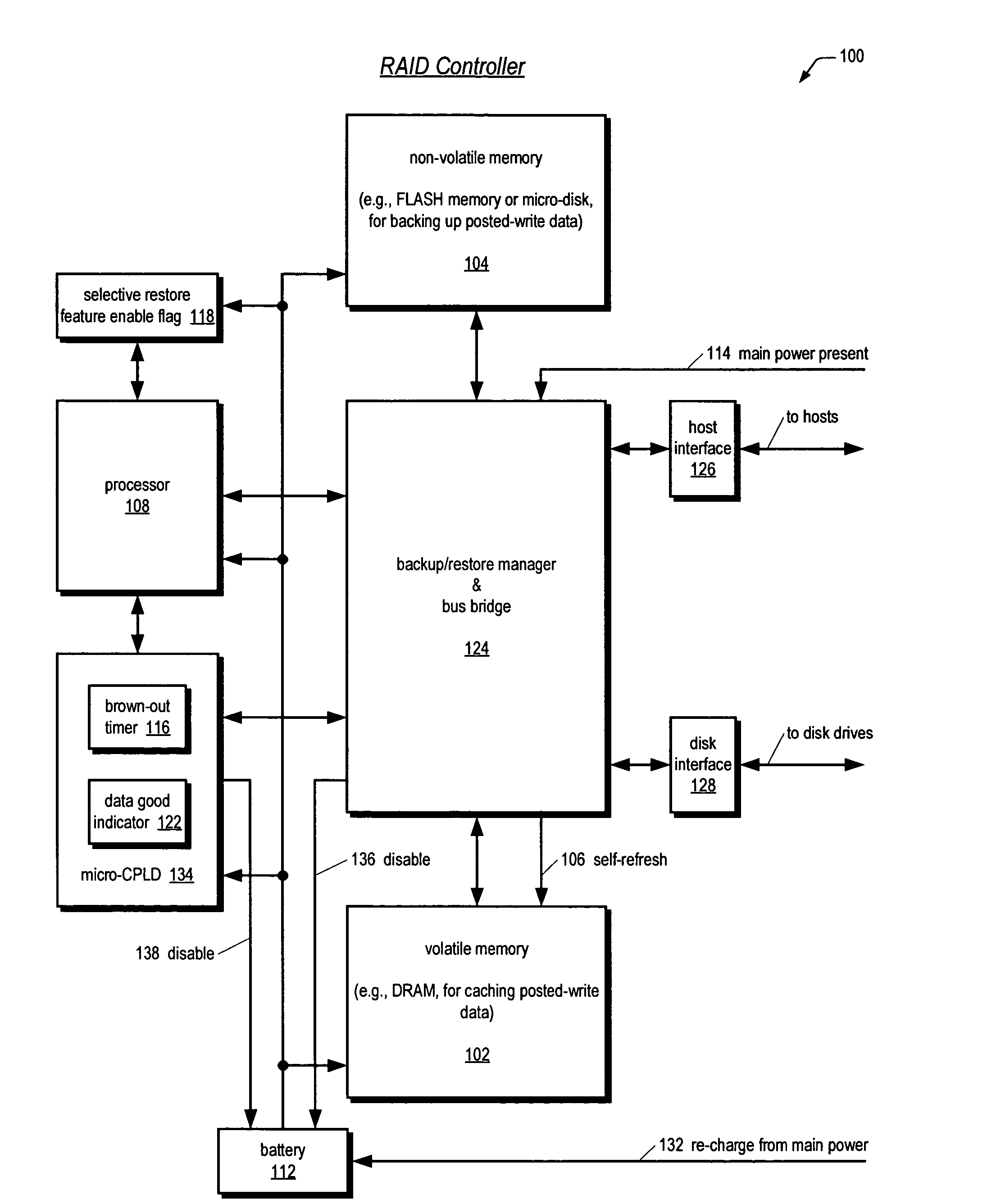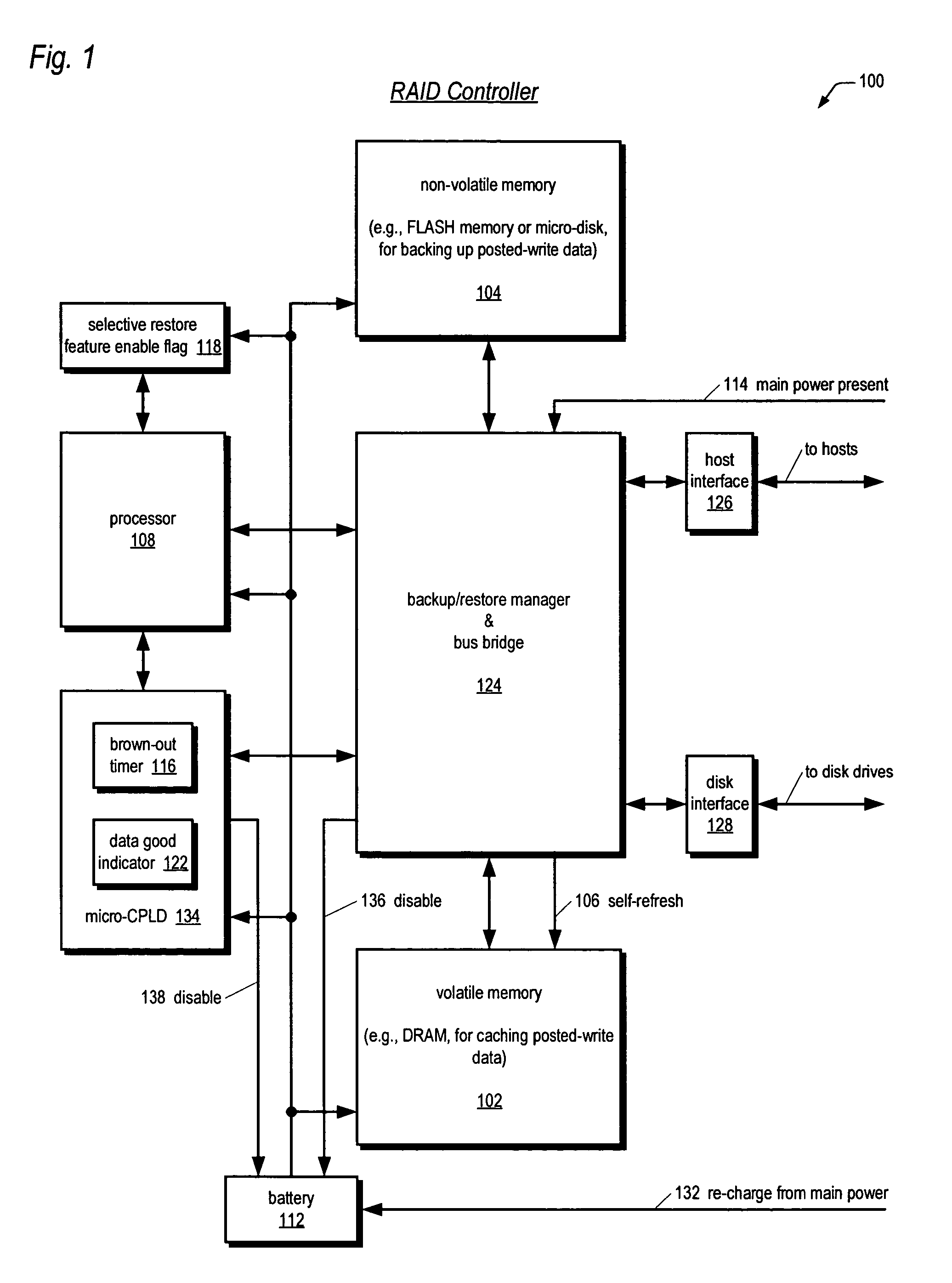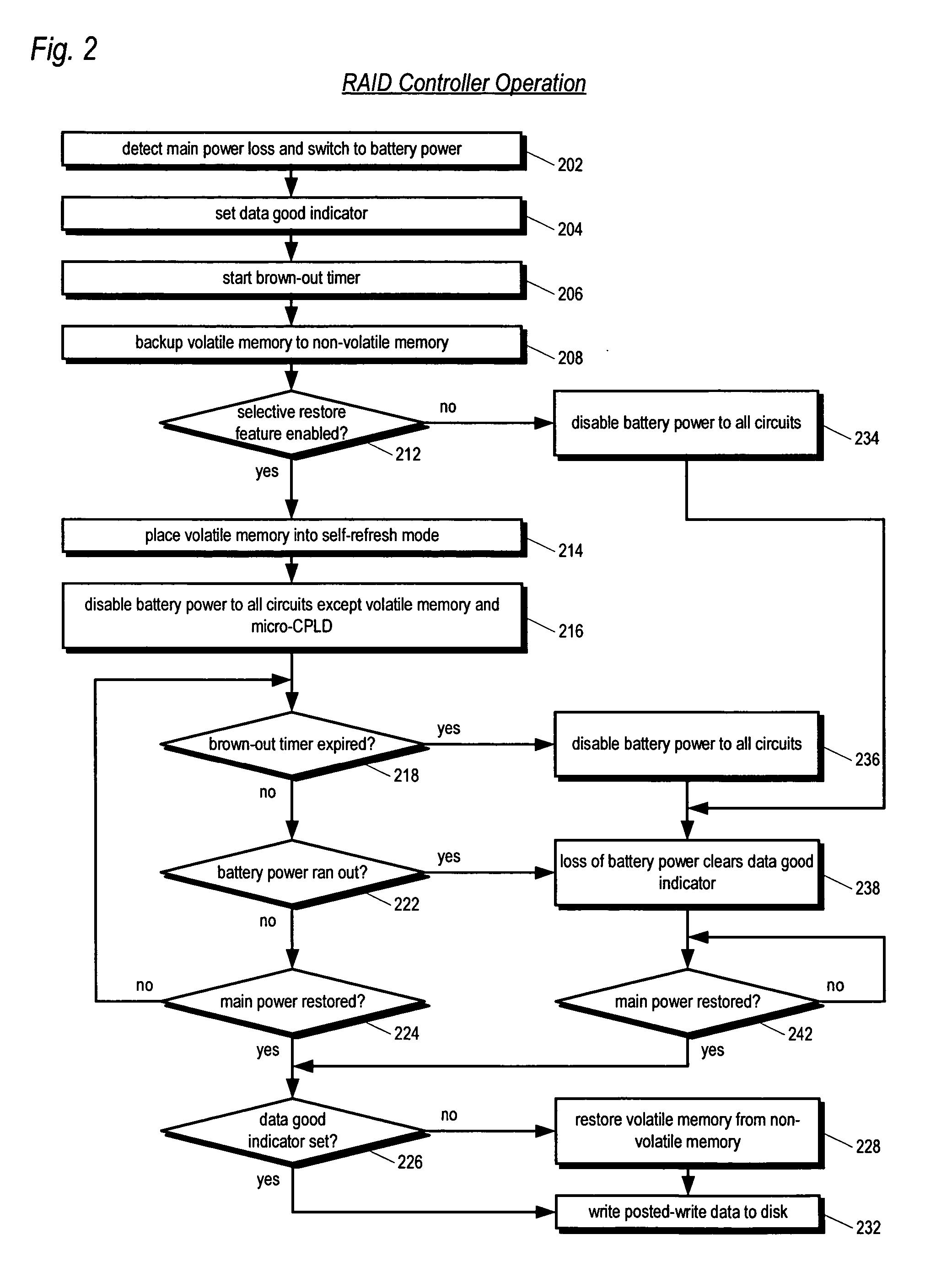Apparatus and method in a cached raid controller utilizing a solid state backup device for improving data availability time
a data availability time and cache controller technology, applied in fault response, high-level techniques, instruments, etc., can solve problems such as battery power running out, system vulnerable to data loss, and reduce the likelihood of user data being lost, so as to improve data availability and improve data availability
- Summary
- Abstract
- Description
- Claims
- Application Information
AI Technical Summary
Benefits of technology
Problems solved by technology
Method used
Image
Examples
Embodiment Construction
[0016] Referring now to FIG. 1, a block diagram illustrating a mass storage controller 100, such as a RAID controller, according to the present invention is shown. In one embodiment, the controller 100 may be one of a pair of active-active redundant fault-tolerant RAID controllers for providing high data availability.
[0017] The controller 100 includes a disk interface 128 for interfacing to disk drives or other mass storage devices, including but not limited to, tape drives and optical storage devices, such as CDROM or DVD drives. The disk drives store the user data. The disk interface 128 may include, but is not limited to, the following interfaces: Fibre Channel, Small Computer Systems Interface (SCSI), Advanced Technology Attachment (ATA), Serial Attached SCSI (SAS), Serial Advanced Technology Attachment (SATA), Ethernet, Infiniband, HIPPI, ESCON, or FICON. The controller 100 reads and writes data from or to the disk drives in response to I / O requests received from host computer...
PUM
 Login to View More
Login to View More Abstract
Description
Claims
Application Information
 Login to View More
Login to View More - R&D
- Intellectual Property
- Life Sciences
- Materials
- Tech Scout
- Unparalleled Data Quality
- Higher Quality Content
- 60% Fewer Hallucinations
Browse by: Latest US Patents, China's latest patents, Technical Efficacy Thesaurus, Application Domain, Technology Topic, Popular Technical Reports.
© 2025 PatSnap. All rights reserved.Legal|Privacy policy|Modern Slavery Act Transparency Statement|Sitemap|About US| Contact US: help@patsnap.com



